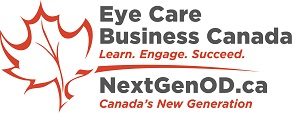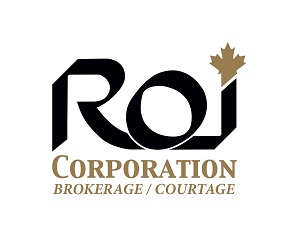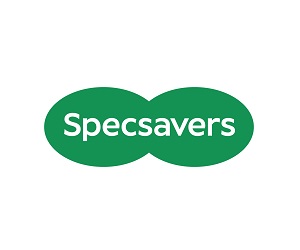
Do you wish one or more of your team members didn’t work for your practice anymore? Do you have angst when it comes to reviewing team members and, if needed, terminate them from the practice?
It is important to weed the garden so the flowers can grow. Often times informing a team member that they may find a better fit at a different job is in the best interest of the employee and the practice.
At Cowichan Eyecare, we pride ourselves on delivering personalized, cutting-edge, and compassionate eye care powered by a team that supports one another, shows up with purpose, and embraces our core values: patient-centric care, continuous learning, professionalism, and fun. When every role contributes to the patient experience, one person’s disengagement, inconsistency, or misconduct can quickly impact team morale, clinic flow, and most critically the quality of care we offer.
That’s why, as difficult as it may be, there are times when we must compassionately but decisively exit a team member who is not performing to expectations. Not as a first step but often as the last.
Why It Matters: The Cost of Holding On
Retaining a non-performer comes at a high price. It erodes team trust, creates double standards, and risks losing high performers who are forced to “carry” teammates. Patients notice the difference too: disengagement is contagious and visible.
As leaders, we have a duty to our patients, our team, and the mission of Cowichan Eyecare to foster a work environment that’s high-functioning, collaborative, and aligned. Letting someone go isn’t about punishment. It’s about protecting culture, restoring balance, and opening space for the right person to thrive in that role.
How to Do It Right: A Compassionate, Compliant Approach
- Clarity Comes First
Before we ever talk about “exiting” someone, we must ensure expectations have been clear. Cowichan Eyecare’s Employee Policy Handbook (2025), along with our Code of Conduct and training protocols, outlines behavioral, attendance, and performance standards. Each new hire undergoes a 90-day probationary period, designed to assess fit and commitment. For established employees, biannual performance reviews provide structured feedback and documented goals.
If someone is underperforming, whether through attendance issues, attitude problems, or failure to meet role-specific benchmarks, the first step is communication. Feedback should be specific, documented, and ideally paired with support: coaching, additional training, or reasonable accommodations.
- Use Progressive Discipline Thoughtfully
Cowichan Eyecare’s handbook supports a progressive discipline approach. This might include:
- Verbal warnings
- Written performance improvement plans (PIPs)
- Temporary schedule changes
- Suspension (if appropriate)
It’s not about box-checking; it’s about giving someone a real opportunity to course-correct. But discipline must also have a time frame. If improvement doesn’t occur within a reasonable period, we must follow through.
- Avoid the “Slow Fade”
One of the most damaging leadership habits is the “slow fade” by avoiding direct conversations, cutting hours without context, or passively letting someone drift until they quit. It’s unclear, unhealthy, and unfair to everyone involved.
Instead, if a PIP fails or expectations continue to be unmet despite support, schedule a formal termination meeting. This should be professional, brief, and grounded in facts, not emotions. Always have a second manager or HR representative present. Stick to what has been documented. Don’t rehash or debate.
- Protect Privacy, Preserve Dignity
Even when terminating employment, we respect the dignity of every individual. Be discreet. Schedule exit meetings privately. Avoid gossip or speculation from team members. If a staff member asks, you can simply say: “____ is no longer with the practice. We wish them well and are moving forward with coverage for that role.”
- Debrief with the Team
While we don’t share confidential details, we can acknowledge when a difficult transition has occurred and thank the team for stepping up. If the exit involves conflict or culture issues, this is a good time to reiterate our core values and invite feedback from the team. In fact, a Bluenote shoutout is often a powerful way to close the chapter on a tough situation: “Bluenote to Chemainus for staying so grounded during a high-stress week; your energy and professionalism made all the difference.”
- Reflect, Rebuild, Rehire
Every exit is an opportunity to reflect: Did we onboard clearly? Were expectations defined? Were red flags missed? If the issue was about fit rather than ability, we use that insight to inform our next hire. Culture-forward hiring by asking value-based questions, assessing team fit, and setting clear probation expectations helps prevent repeating the same cycle.
At Cowichan Eyecare, we don’t shy away from hard conversations. But we also don’t lead with fear. When we exit someone, we do so with professionalism, compliance, and care knowing that maintaining a strong, healthy team is what allows us to serve patients with excellence.
We’re not perfect. But we are committed to our people, to growth, and to creating a workplace where everyone can do their best work, together.

DR. TREVOR MIRANDA
Dr. Miranda is a partner in a multi-doctor, five-location practice on Vancouver Island.
He is a strong advocate for true Independent Optometry.
As a serial entrepreneur, Trevor is constantly testing different patient care and business models at his various locations. Many of these have turned out to be quite successful, to the point where many of his colleagues have adopted them into their own practices. His latest project is the Optometry Unleashed podcast.
















